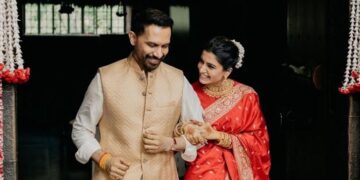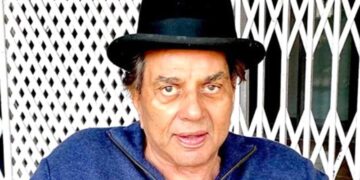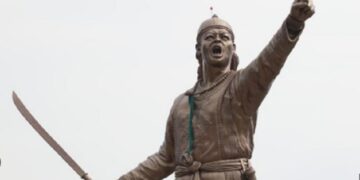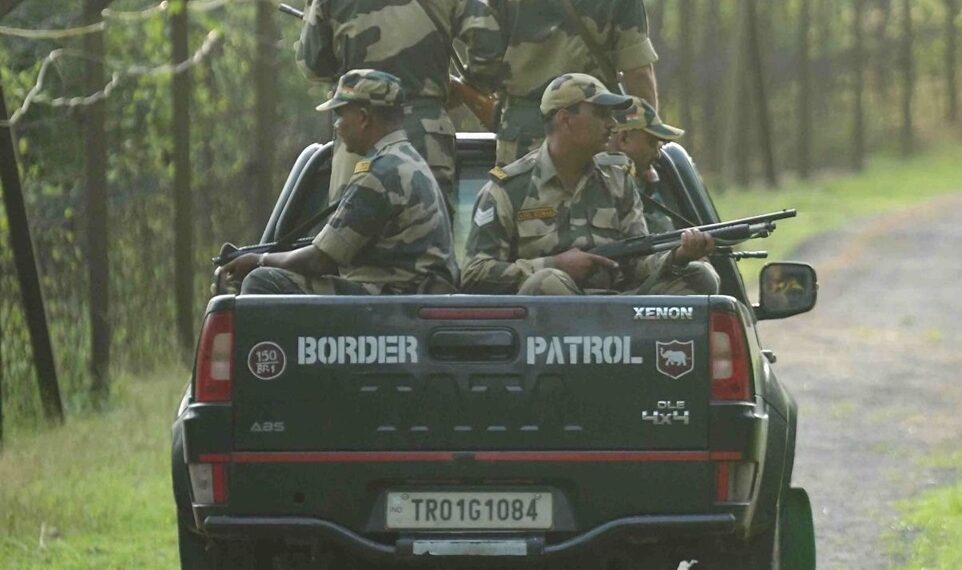India is approaching the wrong side of eighty on 15 August 2025. But it has not been able to anvil a comprehensive anti-terror doctrine.
If the notion of doctrine—in the discourse of state action—were to lend itself to holistic appraisal, then it would not emerge merely as a belief system that is established on the basis of authority.
A state sponsored doctrine comes to the fore when there is a correct understanding of the universe of discourse in which a state stations itself, its perception of threat to the discourse, which propels it to continued nationhood, and a clearly defined manner in which it seeks to both fortify itself and respond to threat.
Indeed, the search for a doctrine essentially begins with a correct understanding of the paradigm in which a state or a system seeks to situate itself in.
Such an understanding could stem from the examination of a number of aspects, including a state-system’s distinctive spirit, ethical values, the relationship between the governance and the governed and how it perceives renegade conduct, anti-state action and external aggression.
If a doctrine is normally accepted as authoritative, and as principle that may not be questioned, then the reason behind such a consideration would be that the doctrine was arrived at after great deliberation.
Even age-old Indian commandments have evolved over the ages on the shoulders of a philosophy that has been held to be uncreated and eternal, at times even assuming canonical status.
But a closer look at even such imperatives would show that contemplation and analysis had spawned that eternal authority: even as ancient Indian seers delved deep into the brhadaranyaka in search of the uncreated word, it was essentially cerebration and dialectics that had characterised the result.
If the combat doctrine of the Indian army, for instance—in its broadest contour—is based on holding formations and strike formations, then it exhibits a philosophy based on tactical consideration that has been arrived at after considerable amount of thought and experimentation.
India has been to war on five occasions, and although each time witnessed a different nature of warfare, the fact of the matter is that the Indian army (as must be the case with the other two arms of the Indian armed forces) had the opportunity to test and develop its doctrine.
A doctrine can, therefore, mature, while adhering to a broad set of beliefs. In other words, although the tactical considerations of a doctrine may receive newer insights, and consequently undergo calibration, the broad parameters would not change unless a paradigm shift occurs.
Paradigm shift (by way of illustration) in an extra-Indian geo-political context would include the break-up of Pakistan in 1971 and the Soviet Union in 1991.
The loss of the eastern wing would have necessitated the establishment of a new security doctrine for Pakistan (if indeed, it sought such an articulation), as would be the case with Russia after the formation of the Commonwealth of Independent States from among the states of the former Soviet Union.
But even as a doctrine continues to be iron-clad and may not be open to commonplace “paradigm shifts,” recalibration may take place.
An important dilemma that must be presently facing the policy makers of India is the manner in which the recent developments in Bangladesh (or Manipur, for the matter!) would have to be factored into the universal Weltanschauung that India has come to terms with.
Other aspects such as the never-ending Naga Peace Process—and the entire North Eastern imbroglio—can be characterised as mere “problem-solving”.
Other formulations of doctrine could include ones that are a priori, as opposed to a posteriori ones like the aforesaid Indian army doctrine.
An instance of an a priori doctrine would be the Indian nuclear doctrine. Despite the fact that it has never used its nuclear arsenal in war, India possesses an operational nuclear doctrine.
The doctrine stems from India’s understanding of the discourse in which its nuclear capability, and that of others, rest.
Therefore, if the most important coordinates of India’s nuclear doctrine centre around (i) Building and maintaining a credible minimum deterrence (ii) a posture of “No first Use”: nuclear weapons will only be used in retaliation against a nuclear attack on Indian territory or on Indian forces anywhere (iv) Nuclear retaliatory attacks can only be authorised by the civilian political leadership through the Nuclear Command Authority and the last point (viii) Continued commitment to the goal of a nuclear weapon free world, through global, verifiable and non-discriminatory nuclear disarmament, the aspects which filter through showcase India’s worldview by way of (among other aspects) its faith in democracy and civilian authority, non-aggressive posture and a comprehension of the principle of deterrence.
Indeed, in the aftermath of the Bangladesh fiasco, pundits of the Indian state—serving and retired—pressed me to adopt the phrase “strategic patience” as opposed to “direct action”.
The latter, on hindsight, would have been far more prudent in the long run.
But that would have necessitated at least a passing acquaintance with the history, the “wigged” conspiracies and an ability to comprehend facades.
The Indian demeanour has just not internalised “back-room manoeuvring” and is content, as I once wrote, in flaccid fire-fighting. Indeed, in my acute understanding it is only the Indian army that is seized of the situation—especially in the hinterland (Nagaland, South Arunachal Pradesh and the Northern Borders)—and are fortifying the vulnerable areas of India in its eastern extremities.
The formulation of a full-bodied doctrine, therefore, is characterised by a state-system’s world-view, and need not necessarily be egged on by experience.
A doctrine is needed to not only govern response of a state-system, but also to act in the manner of a design that would guide the response.
In India, anti-terror perception has waxed and waned in the most curious of ways: different dispensations have different ways of relating and responding to the same problem.
At times, political one-upmanship goads a replacing regime to hold dialogue and negotiate with terrorist/separatist organisations, which the replaced regime had eschewed.
While debate continues whether benefit spews from such indistinctness, the fact of the matter is that a mature democracy like India cannot afford to continue with such ambiguities.
Indeed, the need for a doctrine becomes even more imperative when a malaise is continually afflicting a state-system, the experience of which should actually hasten the process of formulation.
The absence of a well-thought-out anti-terror doctrine for India—the construction of which is the avowed duty of the all-knowing Babus in New Delhi—especially as it is one of the most terror-distressed nation, is a striking shortcoming, one that has led to a great deal of uncertainty.
Indeed, the question which needs to be asked at this juncture is why has India not anvilled an anti-terrorism doctrine.
Is it because it continues to grope around for a comprehensive definition of what constitutes terror?
Or, is it because its unique belief system deliberately wants a flexible anti-terrorism policy? Or, has it, in the face of inability to formulate a flexible policy, kept clear of any doctrine formulation whatsoever?
The dilemma that India is faced with also stems from the fact that there exists a non-articulated perception in policymaking circles that there is an inherent distinction between ethnic militancies such as NSCN (IM) and PLA (Manipur) on the one hand, and Islamist groups such as Jaish-e-Mohammad and Lashkar-e-Toiba on the other.
Indeed, this is so despite the fact that (at times) the activities of PLA (Manipur) had approximated that of a group like Lashkar-e-Toiba when it killed non-combatants such as six-year-old son, Abeer of Col. Viplav Tripathi.
If such features of Indian officialdom are any indication, then policy planners of the country do not seem to be suffering from a crisis of definition.
It is quite clear in its understanding of the meaning of terrorism.
Indeed, in my opinion, it is in fact such an understanding that has led not only to the ambivalence that characterises India’s response to terror, but the non-articulated perception of what constitutes terrorism.
However, the dilemma at home has not prevented India from being in the forefront of criticism when talk of ambiguity of definition has characterised anti-terror action in the international arena.
Former National Security adviser of India, Brajesh Mishra was quite categorical when he censured vacillating nations during the course of an international conference on security [“Global Fight Against Terrorism: Status and Perspectives”, at the 39th Munich Conference on Security Policy, 9 February 2003].
He said: It is most unfortunate that some diversionary arguments are still blocking a consensus on important anti-terrorist conventions and continue to impede efforts for a united and coherent international anti-terrorist strategy.
Sixteen months after the worst terrorist actions in the world, an agreed definition of terrorism still eludes the international community.
Distinctions between freedom fighters and terrorist propagate a bizarre logic, which glorifies massacres of one set of innocent civilians, while condemning killings of others.
We have to settle this argument, once and for all, on the civilised principle that the right to life of innocent people cannot be superseded by a right to kill them for some political cause, or to redress some real or imagined historical wrong.
Terrorism is defined by the act, not by the attributes or the description of its perpetrators.
If terrorism is defined by the act (as aforesaid), then even the carnage at Dhemaji in Assam on 15 August 2004, when United Liberation Front of Asom (ULFA) reportedly triggered off an explosion killing 13 people including innocent women and children, should have been enough to deal with ULFA in the manner of a terrorist organisation.
But New Delhi has not only not done so, but is presently taking active steps to hold dialogue with the very people who were responsible for the act.
What could be the reason for this? Is it because New Delhi considers the Dhemaji incident as uncharacteristic ULFA behaviour, an act that occurred without premeditation, or an accident for which the organisation has reportedly repented?
Or, are there are other considerations for which a political engagement with ULFA, in the present circumstances, makes sense?
It is also possible that the non-articulated distinction, which Indian policy makers might be making between ethnic militancies like PLA (Manipur) and Islamist groups such as Jaish-e-Mohammad, could well have been egged on by the fact that the Indian experience with ethnic militancy has not been altogether negative.
Ethnic militant groups such as Mizo National Front had returned to the Indian constitutional process, and groups such as NSCN (IM) are presently engaged in a dialogue process with New Delhi.
The ULFA (Pro Talk)’s show of interest in a negotiated settlement (albeit, this time around from a position of relative weakness) appeals to New Delhi’s present bout of magnanimity, and although the organisation’s pro-talk faction no longer holds onto the issue of “sovereignty,” its charter of demands has conditions that would ascertain the group’s honourable exit.
It is not known whether New Delhi would accept the demands.
But non-acceptance of such demands would not result in stalemate, as there would be criticism that another NSCN (IM) is being created, whereby an insurgent group is being sought to be pinned down by protracted dialogue.
It is also possible that New Delhi feels that an insurgent organisation having come over ground would taste the “dividends of peace,” and find it difficult to return to its earlier Spartan existence.
This may be fine strategy, but certainly one which only has short term gains.
Such coaxed outfits would sooner or later see through the game, and take to methodologies that might be even more difficult to counter, including the launching of a movement from within India and from among the people it seeks to represent, especially as there would be considerable pressure from the people it has been representing.
The Pambei led pro-talk leadership of UNLF, for instance, has to exhibit to its parish (among whose midst it is now willy-nilly present!) that it will be able to exact “concessions” from New Delhi (that would ensure greater autonomy and elbow room for Manipur) which its belligerence as part of the Myanmar Sagaing Division’s Coordination Committee has not been able to cull.
Inability to do so would result in its parish questioning the group’s credibility and the reason for the several year-old struggle that the group was engaged in, and for which countless lives were lost.
The Pambei group cannot afford this. Indeed, intense debate has already begun inside Manipur about the “futility” of the struggle, with sundry opinion stating that the “demands” that the group’s leadership has presented to New Delhi is a sell-out.
The nation’s policy planners must take all such aspects into consideration. It must realise that it is negotiating with only one faction of UNLF. UNLF (Koirang) being the other one.
The example of ULFA comes to mind again. New Delhi must make full use of the opportunity that serendipity has provided it.
Indeed, the aid that was provided by Sheikh Hasina’s Bangladesh (when Dhaka handed over almost the entire ULFA leadership to India!) ascertained that New Delhi was approaching the table from a position of strength.
But one aspect that cannot be denied is the fact that the strategy which New Delhi is adopting vis-à-vis ULFA is one that has not been husbanded by a predetermined philosophy or doctrine, but by expedience, indeed, one which just fell on its lap!
However, even the good fortune that characterised the situation that led to the ‘split” in ULFA has not been without its flaws.
An analysis has not unravelled a “method-in-the-madness.” Indeed, the “strategy” may only succeed in complicating matters.
According to Satish Chandra [“Blowing up the Peace Pipe to Bits,” The Pioneer (New Delhi), 27 August 2005], former Deputy National Security Adviser, a comprehensive understanding of a group’s ideological leanings etc is of essence in order to successfully deal with it. He writes:
In evolving strategies to effectively address insurgencies we need to keep in mind the nature of their ideological moorings, their socio-economic causative factors and their propensity to use violence sometimes aided from abroad.
While most will agree that the successful management of insurgencies calls for firmly putting down violence and promoting economic development there can be debate on the extent to which the ideological moorings of insurgencies should govern the decision on whether or not the State should engage them in dialogue.
It is submitted that dialogue with secessionist entities, particularly those acting under inimical external influences, or those committed to the destruction of the state as presently constituted, is counterproductive, as such entities are averse to any reasonable settlement and see in dialogue only an opportunity to regroup
The current scenario vis-à-vis NSCN (IM) presents an interesting situation for India—its policymakers may even wish to learn from it. If political solution with NSCN (IM) (as it has been with certain other groups of the North East) is an option for New Delhi, then it is analysed that the non-articulated distinction that its policymakers have made between ethnic militancy and Islamist groups is being regarded as a yardstick.
Would such a distinction necessitate two sets of doctrine? Or, a sub-doctrine, for groups such as ULFA (Anti-Talk), PLA (Manipur) and NSCN (All Factions), which may be subsumed under a broad category of almost acceptable “terrorism”, but with which negotiations are permitted?
The distinction—although presently non-articulated—has to be made clear. Mere statements such as, “we are ready to talk to anyone who abjures violence,” makes no sense.
This aspect becomes all the more important when the question, “would makers of such statements ever countenance negotiation and political arrangement with the people who sought to stormed the parliament” is posed?
The Indian experience with terrorism is different from its experience of insurgency, necessitating therefore, different treatment.
Difference in treatment could range from the undertaking of tough and unsavoury measures and the usage of the loudhailer between acts of siege for controlling ethnic militancies.
Although the cross-border terrorist phenomenon has always afflicted India, the belligerence with which it has begun to array itself in the aftermath of 11 September 2001 has brought into question India’s relationship with its immediate neighbours.
If earlier Pakistan was the only neighbour that aided and perpetrated acts of terror against India, the “eastward surge of the Islamist” (especially in the aftermath of Operation Enduring Freedom and the partial detalibanisation of Afghanistan, and now an Islamist Bangladesh) has included nations like Bangladesh into the club of “near abroad terror sustainers”.
Furthermore, there are reports that China has re-entered the North East insurgency game.
A robust anti terror doctrine has to take into consideration that almost ninety-nine percent of anti-India operations are planned in India’s near abroad.
While Islamist action constitutes the primal danger to India’s security, anti-India operations that are being carried out by UNLF (K), PLA, anti-talk ULFA etc should be on India’s anti-terror radar as well.
After all, would not linkages with anti-India forces such as ISI-MSS-DGFI qualify, say the Paresh Baruah faction of ULFA and Manipur’s PLA, as terrorist organisations?
But New Delhi has time and again stated that it is ready to talk to even such groups! It is important to examine the nuance of terrorism and India’s world-view in order to answer such a question.
It is also important to understand India’s democratic character and principles which have, in the past, recognised permissible limits of redressal and tolerance to the “other” point of view.
Indeed, it is this belief in the principle of democracy that has probably led New Delhi to sign myriad accords with insurgency movements in the past.
Few parallels, for instance, exist in the civilised world whereby a separatist leader returns to the mainstream, and indeed leads his people by the very principles he once took up arms against.
The Mizo accord and the return of Laldenga (and later, Zoramthanga)—despite the MNF’s nexus with Pakistan—attest to this fact rather boldly.
However, even as the institutional maturity and ability of the Indian state to accommodate such aberrations are praiseworthy, caution must be exercised when dialogue with groups that have history of links with anti-India powers are considered: the ULFA (Pro-Talk) chairman, Arabinda Rajkhowa publicly confessed in Delhi about his organisation’s relations with the ISI.
Correct intelligence and operational appraisals must be made about the status of the past links. Minders in the business of intelligence have a way of keeping the umbilical cord intact.
This aspect gains in importance especially if a group/faction has been led to the dialogue table by way of circumstances that reeks of duress, as has been the case with pro-talk ULFA, a group that did not come over ground on its own accord.
ALSO READ: Meghalaya High Court orders halt on tree felling in East Khasi Hills
But I am an eternal optimist and, therefore, I know for a fact that divisive agenda—in whatever form or manner—cannot endure if there is firmness on the part of the state. The Indic civilisation is too enormous a receptacle.
But the manner in which inclusiveness is being sought to be subverted in present day India is dangerous.
There has to be correct governance, and, of course, a robust security policy for the country that is comprehensive.
A temporary battle-cry attempt that bugles only the need for narrow electoral gains or even one that is seeking to mesmerise a section in order to deconstruct both history and truth cannot last.
Sham pundits throughout the world have attempted to do that. They did so by conjuring a myth.
The Indian experience—is not completely devoid of such sinister aberrations. This seems to be in ample evidence in present Manipur.
But mesmerism is a fleeting phenomenon. It does not last.
Once the bewitchment disappears as indeed it always does there is not only a Herculean awakening but swift retribution (by the harmed populace!) for both the pretense and the practitioner of deceit.
The Indian state and its army are powerful entities. It can face any challenge.
The only move that New Delhi needs to understand and undertake at this critical juncture is to empower its arms.
The Indian army is more than capable of achieving the impossible. The Indian response to insurgency/terrorism cannot afford ambivalence.















